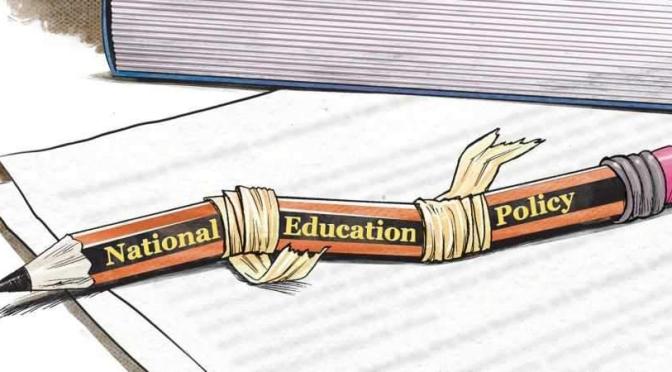by Sidhanta Sarkar
Constitutionally, India is a secular country and has no State religion. India’s concept of secularism had been fully established through judicial decisions and state practice – the preamble to the Constitution was amended by the Constitution (Forty-second Amendment) Act 1976 to include the word ‘secular‘ along with ‘socialist‘, to declare India to be a ‘Sovereign Socialist Secular Democratic Republic‘. The Constitution of India contains in its Chapter on Fundamental Rights several provisions that emphasize complete legal equality of its citizens irrespective of their religion and creed and prohibit any kind of religion-based discrimination between them. Religious freedom as an individual’s right is guaranteed by the Constitution to ‘all persons‘ in Article 25(1), Article 27 and Article 28. Thus, the Right to Freedom of religion forms a very important Fundamental right of our country and aims at maintaining the principle of secularism in India.
Indian constitution firmly states that all religions are equal before the law and no religion shall be favored over the other. The Fundamental Right to religious freedom cannot be enjoyed in an absolutely unrestricted way. There are limitations within which these rights can be exercised, as also lawful restrictions which can be imposed by the State.
The Jatindra Narain Commission’s Report, published recently, on the Jamshedpur riots which erupted on April 11, 1979, on the occasion of the Ram Navami festival, raises questions about the citizen’s right to go in a procession over a public road. These questions were also raised in Justice D.P. Madon’s Report on the Bhiwandi riots which broke out in May 1970 during the Shiv Jayanti festival. The central issue in both cases was conflict between the two groups. The Constitution – Art 19(1) (b) – protects the citizen’s fundamental right ‘to assemble peaceably and with- out arm‘. The right is subject to ‘reasonable restrictions‘ being imposed by the State ‘in the interests; of the sovereignty and integrity of India or, public order‘. Under S 144 of the Criminal Procedure Code, processions can be banned if the District Magistrate feels that “immediate prevention or speedy remedy is desirable” and it is necessary to impose the ban to prevent “a disturbance of the public tranquility, or a riot, or an affray”.
The Supreme Court upheld the constitutional validity of Section 144 in Babulal Parate vs State of Maharashtra in 1960 and in Madhu Limaye’s case in 1970. That was a case where two rival trade unions clashed. In Mohammad Siddiqui vs State Of U.P. And Anr, Qazi Mohammad Siddiq had filed an application against the State of Uttar Pradesh and the District Magistrate of Lucknow, under Article 226 of the Constitution that the applicant applied for the taking out of a religious procession, Madhe Saheba. The magistrate dismissed the application because of fear of breach of peace and conflict based on religion. Lord Justice Scarman, who inquired into the Red Lion Square disorders of June 15, 1974, stated the law in the most explicit terms: “There is a conflict of interest between those who seek to use the streets for the purpose of passage and those who seek to use them for the purpose of demonstration. English law recognizes as paramount the right of passage; a demonstration which obstructs passage along the highway is unlawful. The paramount right of passage is, however, subject to the reasonable use of the highway by others. A procession, therefore, which allows room for others to go on their way, is lawful; but it is open to question whether a public meeting held on a highway could be lawful, for it is not in any way incidental to the exercise of the right of passage. India today faces many crucial problems. On the one hand, the executive is not sensitive about the citizen’s rights. On the other, riots have broken out because of certain kinds of processions“. He referred to Article 19(1) (b) and said “The people must have a right to voice their dissatisfaction or publicly demonstrate their grievances, particularly when it appears that at times even reasonable demands have not been granted unless there were public demonstrations”.



